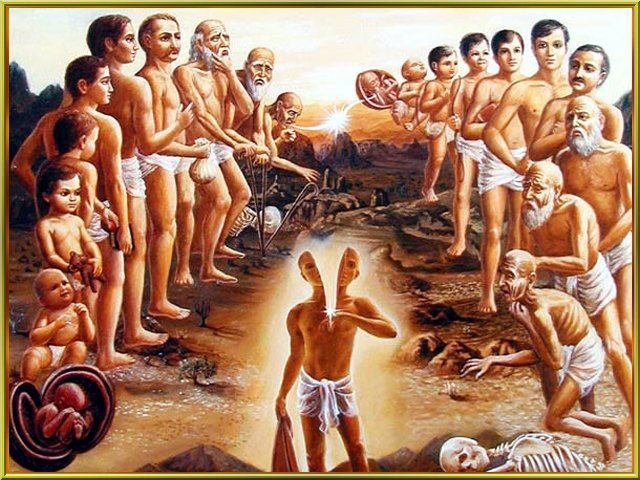Verse 30
dehī nityam avadhyo ’yaṁ dehe sarvasya bhārata
tasmāt sarvāṇi bhūtāni na tvaṁ śocitum arhasi
Word-by-Word Meaning:
| Sanskrit | Meaning |
|---|---|
| dehī | the embodied soul (the one who resides in the body) |
| nityam | eternal |
| avadhyaḥ | indestructible / cannot be slain |
| ayam | this (soul) |
| dehe | in the body |
| sarvasya | of every being / all |
| bhārata | O descendant of Bharata / Arjuna |
| tasmāt | therefore |
| sarvāṇi | all |
| bhūtāni | living beings |
| na | not |
| tvaṁ | you |
| śocitum | to grieve |
| arhasi | deserve / should |
O Arjuna (descendant of Bharata), the soul residing in all bodies is eternal and can never be slain. Therefore, you should not grieve for any living being.

Expanded Commentary:
This verse is a final reaffirmation of the immortality and indestructibility of the Ātman (soul) before Lord Krishna shifts the discussion towards duty and action (Karma Yoga). Krishna reinforces Arjuna’s understanding of the eternal nature of the Self, which exists within every living being, untouched by birth or death.
Key Points Krishna Emphasizes:
- The dehī (embodied soul) is nitya (eternal), avadhya (unassailable), and present in all beings.
- Since this Self cannot die, grieving over the destruction of bodies is born from ignorance of the truth.
- Arjuna’s sorrow is misplaced, as he mourns not the soul but the perishable body.
Symbolic Meaning:
| Term | Symbolizes |
|---|---|
| Dehī (Embodied One) | The eternal Self (Ātman) residing in the perishable body |
| Avadhya (Indestructible) | The soul cannot be harmed, destroyed, or slain |
| Sarvasya Dehe (In all bodies) | The universality of the Self — all beings share the same eternal essence |
| Na Śocitum (Not to grieve) | Recognition that grief comes from attachment to the unreal |
Philosophical Insights:
- Universality of the Soul:
- The same unchanging consciousness dwells in every being, beyond caste, form, or status.
- Realizing this unity leads to compassion without attachment.
- Indestructibility of the Self:
- You can harm the body, but not the Self.
- All fears, including that of death, are rooted in identification with the body.
- Detachment from Grief:
- Mourning arises when we see the body as the self.
- True knowledge sees beyond the perishable.
- Foundation for Dharma (Righteous Action):
- If the Self is untouched by death, Arjuna’s duty as a warrior (Kṣatriya Dharma) becomes unclouded by personal emotion.
Practical Application:
- Overcoming Fear of Death: Understanding that the Self is indestructible helps dissolve the deep-rooted fear of mortality.
- Reducing Attachment: When we internalize that others are also eternal souls, our clinging to physical presence softens.
- Healing Grief: This wisdom doesn’t suppress mourning but elevates it — transforming loss into sacred acceptance.
- Acting with Clarity: Recognizing the eternal nature of life strengthens our ability to act with detachment and righteousness.
Reflection Questions:
Do I see myself only as this body, or am I aware of the eternal Self within?
Can I see others — even enemies or strangers — as sharing the same divine essence?
How would my response to loss and suffering change if I truly believed the Self is indestructible?
Conclusion:
Krishna gently but firmly instructs Arjuna to rise above his limited perception. The soul (dehī) is not a product of the body and does not perish with it. Since all beings house this imperishable essence, grieving for their bodily loss is a misjudgment of reality.
True wisdom lies in recognizing the immortal within the mortal, the eternal amid the temporary. With this clarity, Krishna invites Arjuna — and all of us — to move beyond sorrow, to live in the truth of the Self, and to act from a space of fearless spiritual understanding.
